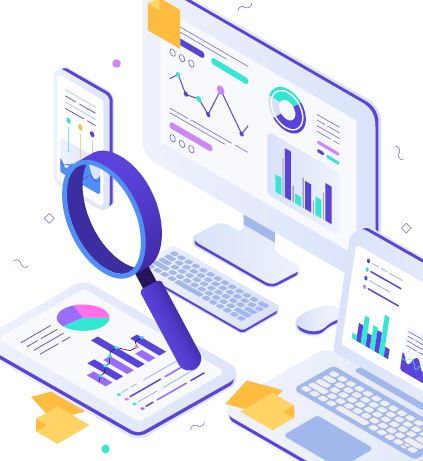Insurance in the digital age: injecting automation into the claims process
Whether you envisage self-driving vehicles to be five or 25 years away, given the substantial investments and technological progress being made, it is hard to argue against the industry’s narrative of inevitability.
Not to be outdone in this digital age, insurance claims is forging its own digital transformation path, leveraging advancements in technology and analytics to inject automation into the claim process. So how far away are we from delivering claim processing that is automated end-to-end? Will this happen before driverless Ubers are roaming the streets?
The short answer is ‘yes’. But, no doubt like the first ‘driverless’ cars that will come to market, there are caveats.
‘Claim processing’ covers a wide range of activities and claim types from the simple, like the loss of a low-value specified item, through to the highly complex, like the evaluation of a business interruption event or assessing negligence in a professional indemnity claim. As a result, the pace of digital transformation across the full claim spectrum will vary. But, ultimately, digitalisation will touch every corner of the claim world.

A lot of claim processing, across all product lines, is carried out manually and somewhat “behind the scenes.”
Automated claim processing is not completely new. Many insurers have been processing high-volume, low-cost, low complexity claims, such as vehicle windshield claims, with very little, if any, human intervention for decades. This is a great example of the simplest type of claim to automate given that it is relatively low value and that the fulfilment is being delivered by a trusted supplier partner within an automated solution and predefined parameters.
A natural quick-win expansion of this approach has been to target similar claim types, or individual losses or items that are part of a wider claim, that lend themselves well to automation. Good hunting ground is low-value retail property and travel claims. However, this does require expanding claim automation to cases where the settlement is going directly to the customer, and this means pushing the historical boundaries, particularly in relation to trust.
Given the historical level of fraud and other market dynamics that find customers increasingly switching providers, thus reducing their historical data footprint, implementation here needs to be executed expertly to mitigate against these risks. The appetite to broaden this automation also highlights why behavioural analytics, which can support the assessment process, will play an ever-increasing role in the future of claim processing.
Perhaps surprisingly, claim processing for one of insurance’s highest claim volume products, auto insurance, falls into the more “complex to automate” category (for the non-windshield cases). One auto claim can often represent several mini-claims rolled into one, with multiple parties, suppliers and claim types (i.e. vehicle damage, car rental, injury) to be managed.
Claim insurtech firms have recognised this challenge and have typically responded by focusing on disrupting distinct elements of the claim process, with a significant number targeting digitisation of the First Notification of Loss (FNOL) process. For example, using AI to assess images to determine the extent of vehicle damage or developing an e-FNOL solution that enables the customer, or their broker, to self-serve this part of the process through a digital channel.
Of course, not all of today’s technological development is shiny and overt. A good example of this in the wider technology landscape is the Global Positioning System (GPS). While this operates primarily in the background of many of the devices, services and businesses we use, history will undoubtedly reflect that it has been one of the most transformational technological developments of our time, given its impact on our everyday lives. A parallel can be drawn here on where a substantial element of the claim technological development is taking place.
A lot of claim processing, across all product lines, is carried out manually and somewhat “behind the scenes.” Whether this is triaging, routing, validating, assessing liability, corresponding with third parties or evaluating an individual claim’s cost, there are numerous activities that are performed during the claim life cycle that are vital but often not visible outside of the Claims function. Insurers’ increased focus on customer-centricity will lead to greater transparency, control and personalisation for the end consumer and inevitably push some of these customer-related activities more into the limelight. For example, when their items have been lost or damaged, customers are likely to be given greater choice on whether they wish to opt for a cash settlement or a replacement, and in many cases this will be via a digital interaction. This shift in experience will add to customers’ growing demand for more immediacy and effectiveness in the processing of these activities, akin to their experiences with other digital services.
A common thread across these activities is decision making, and this is where the technology opportunity kicks in. Computer science can play a key role in this decision-making process, and progressive insurers are already fully active in leveraging its predictive power. Supported by advancements in Natural Language Processing (NLP) with its ability to tap into unstructured claim data, AI can help drive increased accuracy and speed of decision making and in turn expedite proactivity in claim handling and thus help to deliver on traits that are synonymous with high-performing claims functions as they result in improved efficiency and significant financial savings, as well as delivering better outcomes for customers.
Like GPS, software solutions such as Radar, Willis Towers Watson’s own analytical software suite and real-time decision engine technology, can work in the background to provide decision making at key junctures in the claim life cycle. This might be selecting which supplier is best suited for the claim, determining the appropriate case estimate or assessing if an invoice is suitable for payment. Models can also be continuously running on the engine scanning to help alert the Claims team for cases that are “at risk,” for example, of issues such as fraud or litigation, or of delivering a poor customer experience. The power of machine learning is being leveraged throughout with the models trained to look across a vast array of structured and unstructured data to identify the characteristics of a claim and to assess the optimum response.
The caveat to achieving full automation in claims is that certain aspects of the process or scenarios will require complex judgment, investigation or the human touch, such as the need to reassure and empathise with a customer who needs support during a significant event like a flood in his or her property. This means that claim handlers will need to remain in the driver’s seat to take control and handle these critical elements, and, much like partial self-driving vehicles, it is critical that automated mechanisms are able to identify when the situation requires human intervention and manage the interaction between handler and machine effectively.
The ultimate success to self-driving vehicles becoming mainstream is dependent on the experts achieving real-time orchestration of sensors, cameras, onboard computers and algorithms, interacting these technologies harmoniously with their external environment and determining whether there are certain scenarios when driver control is necessary. Comparably, the key task for claim leaders over the next few years will be in mastering the effective integration of the multiple technologies and analytical advancements that are now at their disposal to deliver seamless automated claim processing and decision support for claim handlers in a way that improves the experience for customers and realises return on the investment for the business.









































With total claims automation, insurance companies will once again reaffirm themselves in the financial services industry just like the Lion in the jungle